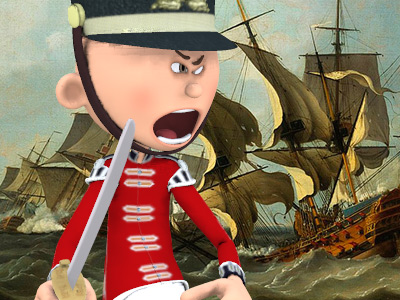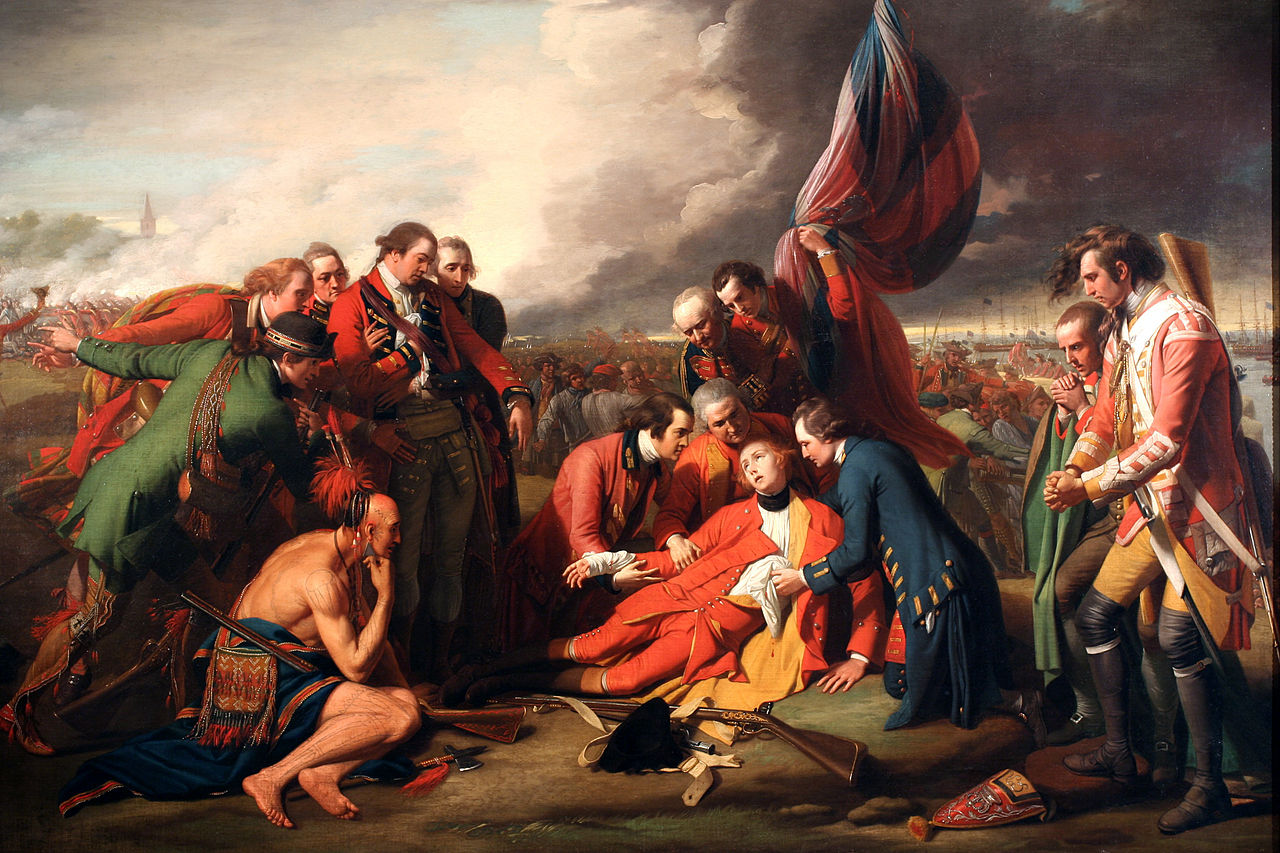Seven Years' War (1756-1763)
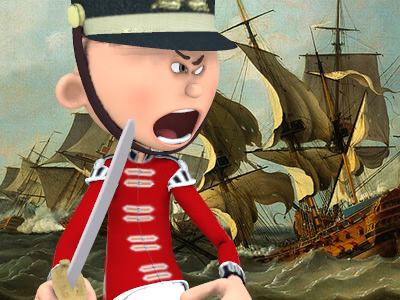
Background of Seven Years' War
Europe
In the War of the Austrian Succession, which lasted from 1740 to 1748, King Frederick II of Prussia, known as Frederick the Great, seized the prosperous province of Silesia from Austria. Empress Maria Theresa of Austria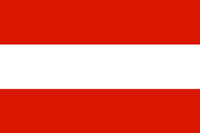 The Archduchy of Austria was a major principality of the Holy Roman Empire and the nucleus of the Habsburg monarchy. With its capital at Vienna, the archduchy was centered at the Empire's southeastern periphery. The archduchy's history as an imperial state ended with the dissolution of the Holy Roman Empire in 1806. It was replaced with the Lower and Upper Austria crown lands of the Austrian Empire. had signed the Treaty of Aix-la-Chapelle in 1748 in order to gain time to rebuild her military forces and forge new alliances.
The Archduchy of Austria was a major principality of the Holy Roman Empire and the nucleus of the Habsburg monarchy. With its capital at Vienna, the archduchy was centered at the Empire's southeastern periphery. The archduchy's history as an imperial state ended with the dissolution of the Holy Roman Empire in 1806. It was replaced with the Lower and Upper Austria crown lands of the Austrian Empire. had signed the Treaty of Aix-la-Chapelle in 1748 in order to gain time to rebuild her military forces and forge new alliances.
The War of the Austrian Succession had seen the belligerents aligned on a time-honoured basis. France's The Kingdom of France is the historiographical name or umbrella term given to various political entities of France in the medieval and early modern period. It was one of the most powerful states in Europe since the High Middle Ages. It was also an early colonial power, with possessions around the world. Colonial conflicts with Great Britain led to the loss of much of its North American holdings by 1763. The Kingdom of France adopted a written constitution in 1791, but the Kingdom was abolished a year later and replaced with the First French Republic. traditional enemies, Great Britain and Austria, had coalesced just as they had done against Louis XIV. Prussia
The Kingdom of France is the historiographical name or umbrella term given to various political entities of France in the medieval and early modern period. It was one of the most powerful states in Europe since the High Middle Ages. It was also an early colonial power, with possessions around the world. Colonial conflicts with Great Britain led to the loss of much of its North American holdings by 1763. The Kingdom of France adopted a written constitution in 1791, but the Kingdom was abolished a year later and replaced with the First French Republic. traditional enemies, Great Britain and Austria, had coalesced just as they had done against Louis XIV. Prussia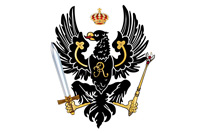 The Kingdom of Prussia was a German kingdom that constituted the state of Prussia between 1701 and 1918. It was the driving force behind the unification of Germany in 1871 and was the leading state of the German Empire until its dissolution in 1918. Although it took its name from the region called Prussia, it was based in the Margraviate of Brandenburg. Its capital was Berlin., the leading anti-Austrian state in Germany, had been supported by France. Neither group, however, found much reason to be satisfied with its partnership: British subsidies to Austria produced nothing of much help to the British, while the British military effort had not saved Silesia for Austria. Prussia, having secured Silesia, came to terms with Austria in disregard of French interests. Even so, France concluded a defensive alliance with Prussia in 1747, and the maintenance of the Anglo-Austrian alignment after 1748 was deemed essential by the Duke of Newcastle, British secretary of state in the ministry of his brother Henry Pelham. The collapse of that system and the aligning of France with Austria and of Great Britain
The Kingdom of Prussia was a German kingdom that constituted the state of Prussia between 1701 and 1918. It was the driving force behind the unification of Germany in 1871 and was the leading state of the German Empire until its dissolution in 1918. Although it took its name from the region called Prussia, it was based in the Margraviate of Brandenburg. Its capital was Berlin., the leading anti-Austrian state in Germany, had been supported by France. Neither group, however, found much reason to be satisfied with its partnership: British subsidies to Austria produced nothing of much help to the British, while the British military effort had not saved Silesia for Austria. Prussia, having secured Silesia, came to terms with Austria in disregard of French interests. Even so, France concluded a defensive alliance with Prussia in 1747, and the maintenance of the Anglo-Austrian alignment after 1748 was deemed essential by the Duke of Newcastle, British secretary of state in the ministry of his brother Henry Pelham. The collapse of that system and the aligning of France with Austria and of Great Britain The Kingdom of Great Britain was a sovereign country in Western Europe from 1 May 1707 to the end of 31 December 1800. The state was created by the 1706 Treaty of Union and ratified by the Acts of Union 1707, which united the kingdoms of England (which included Wales) and Scotland to form a single kingdom encompassing the whole island of Great Britain and its outlying islands, with the exception of the Isle of Man and the Channel Islands. with Prussia constituted what is known as the "diplomatic revolution" or the "reversal of alliances."
The Kingdom of Great Britain was a sovereign country in Western Europe from 1 May 1707 to the end of 31 December 1800. The state was created by the 1706 Treaty of Union and ratified by the Acts of Union 1707, which united the kingdoms of England (which included Wales) and Scotland to form a single kingdom encompassing the whole island of Great Britain and its outlying islands, with the exception of the Isle of Man and the Channel Islands. with Prussia constituted what is known as the "diplomatic revolution" or the "reversal of alliances."
In 1756 Austria was making military preparations for war with Prussia and pursuing an alliance with Russia Russian Empire was an empire and the final period of the Russian monarchy from 1721 to 1917, ruling across large parts of Eurasia. The rise of the Russian Empire coincided with the decline of neighbouring rival powers: the Swedish Empire, the Polish–Lithuanian Commonwealth, Qajar Iran, the Ottoman Empire, and Qing China. Russia remains the third-largest empire in history, surpassed only by the British Empire and the Mongol Empire. for this purpose. On 2 June 1746, Austria and Russia concluded a defensive alliance that covered their own territory and Poland against attack by Prussia or the Ottoman Empire
Russian Empire was an empire and the final period of the Russian monarchy from 1721 to 1917, ruling across large parts of Eurasia. The rise of the Russian Empire coincided with the decline of neighbouring rival powers: the Swedish Empire, the Polish–Lithuanian Commonwealth, Qajar Iran, the Ottoman Empire, and Qing China. Russia remains the third-largest empire in history, surpassed only by the British Empire and the Mongol Empire. for this purpose. On 2 June 1746, Austria and Russia concluded a defensive alliance that covered their own territory and Poland against attack by Prussia or the Ottoman Empire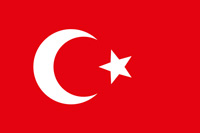 The Ottoman Empire, also known as the Turkish Empire, was an empire that controlled much of Southeast Europe, Western Asia, and Northern Africa between the 14th and early 20th centuries. The Ottomans ended the Byzantine Empire with the conquest of Constantinople in 1453. The Ottoman Empire's defeat and the occupation of part of its territory by the Allied Powers in the aftermath of World War I resulted in its partitioning and the loss of its Middle Eastern territories.. They also agreed to a secret clause that promised the restoration of Silesia and the countship of Glatz (now Kłodzko, Poland) to Austria in the event of hostilities with Prussia. Their real desire, however, was to destroy Frederick’s power altogether, reducing his sway to his electorate of Brandenburg and giving East Prussia to Poland, an exchange that would be accompanied by the cession of the Polish Duchy of Courland to Russia. Aleksey Petrovich, Graf (count) Bestuzhev-Ryumin, grand chancellor of Russia under Empress Elizabeth, was hostile to both France and Prussia, but he could not persuade Austrian statesman Wenzel Anton von Kaunitz to commit to offensive designs against Prussia so long as Prussia was able to rely on French support.
The Ottoman Empire, also known as the Turkish Empire, was an empire that controlled much of Southeast Europe, Western Asia, and Northern Africa between the 14th and early 20th centuries. The Ottomans ended the Byzantine Empire with the conquest of Constantinople in 1453. The Ottoman Empire's defeat and the occupation of part of its territory by the Allied Powers in the aftermath of World War I resulted in its partitioning and the loss of its Middle Eastern territories.. They also agreed to a secret clause that promised the restoration of Silesia and the countship of Glatz (now Kłodzko, Poland) to Austria in the event of hostilities with Prussia. Their real desire, however, was to destroy Frederick’s power altogether, reducing his sway to his electorate of Brandenburg and giving East Prussia to Poland, an exchange that would be accompanied by the cession of the Polish Duchy of Courland to Russia. Aleksey Petrovich, Graf (count) Bestuzhev-Ryumin, grand chancellor of Russia under Empress Elizabeth, was hostile to both France and Prussia, but he could not persuade Austrian statesman Wenzel Anton von Kaunitz to commit to offensive designs against Prussia so long as Prussia was able to rely on French support.
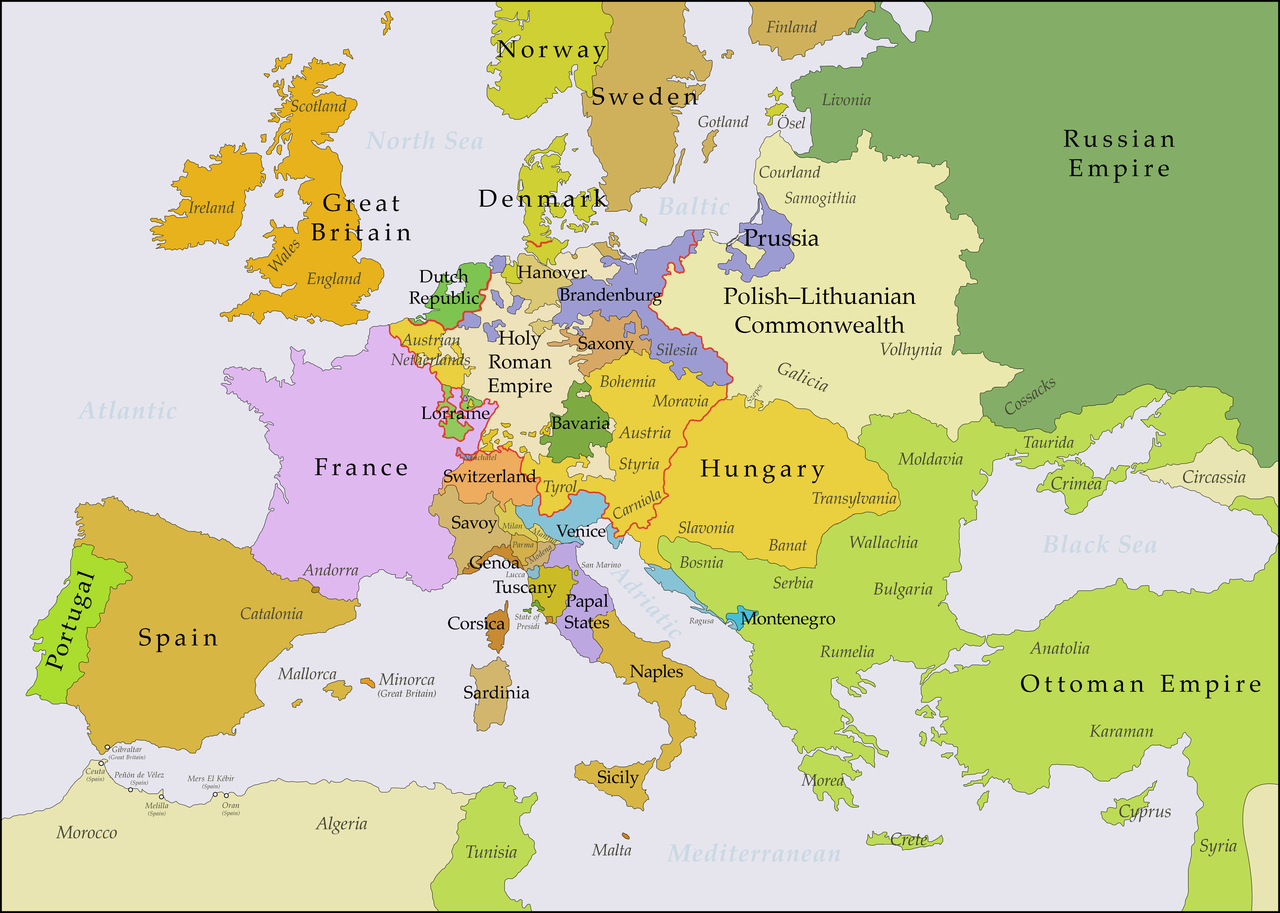
Europe in the years after the Treaty of Aix-la-Chapelle in 1748

Europe in the years after the Treaty of Aix-la-Chapelle in 1748
( Click image to enlarge)
The Hanoverian king George II of Great Britain was passionately devoted to his family's continental holdings, but his commitments in Germany were counterbalanced by the demands of the British colonies overseas. If war against France for colonial expansion was to be resumed, then Hanover had to be secured against Franco-Prussian attack. France was very much interested in colonial expansion and was willing to exploit the vulnerability of Hanover in war against Great Britain, but it had no desire to divert forces to central Europe for Prussia's interest.
French policy was, moreover, complicated by the existence of the Secret du Roi—a system of private diplomacy conducted by King Louis XV. Unbeknownst to his foreign minister, Louis had established a network of agents throughout Europe with the goal of pursuing personal political objectives that were often at odds with France’s publicly stated policies. Louis’s goals for le Secret du roi included the Polish crown for his kinsman Louis François de Bourbon, prince de Conti, and the maintenance of Poland, Sweden, and Turkey as French client states in opposition to Russian and Austrian interests.
Frederick saw Saxony and Polish west Prussia as potential fields for expansion but could not expect French support if he started an aggressive war for them. If he joined the French against the British in the hope of annexing Hanover, he might fall victim to an Austro-Russian attack. The hereditary elector of Saxony, Augustus III, was also elective King of Poland as Augustus III, but the two territories were physically separated by Brandenburg and Silesia. Neither state could pose as a great power. Saxony was merely a buffer between Prussia and Austrian Bohemia, whereas Poland, despite its union with the ancient lands of Lithuania, was prey to pro-French and pro-Russian factions. A Prussian scheme for compensating Frederick Augustus with Bohemia in exchange for Saxony obviously presupposed further spoliation of Austria.
Advertisement

These books are available for download with iBooks on your Mac or iOS device, and with iTunes on your computer. Books can be read with iBooks on your Mac or iOS device.

These books are available for download with iBooks on your Mac or iOS device, and with iTunes on your computer. Books can be read with iBooks on your Mac or iOS device.
( Click image to enlarge)
In the attempt to satisfy Austria at the time, Britain gave their electoral vote in Hanover for the candidacy of Maria Theresa's son, Joseph II, as the Holy Roman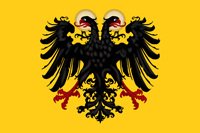 The Holy Roman Empire was a political entity in Western, Central, and Southern Europe that developed during the Early Middle Ages and continued until its dissolution in 1806 during the Napoleonic Wars. From the accession of Otto I in 962 until the twelfth century, the Empire was the most powerful monarchy in Europe. The empire reached the apex of territorial expansion and power in the mid-thirteenth century, but overextending led to partial collapse. Emperor, much to the dismay of Frederick and Prussia. Not only that, Britain would soon join the Austro-Russian alliance, but complications arose. Britain's basic framework for the alliance itself was to protect Hanover's interests against France. At the same time, Kaunitz kept approaching the French in the hope of establishing just such an alliance with Austria. Not only that, France had no intention to ally with Russia, who, years earlier, had meddled in France's affairs during Austria's succession war. France also saw the dismemberment of Prussia as threatening to the stability of Central Europe.
The Holy Roman Empire was a political entity in Western, Central, and Southern Europe that developed during the Early Middle Ages and continued until its dissolution in 1806 during the Napoleonic Wars. From the accession of Otto I in 962 until the twelfth century, the Empire was the most powerful monarchy in Europe. The empire reached the apex of territorial expansion and power in the mid-thirteenth century, but overextending led to partial collapse. Emperor, much to the dismay of Frederick and Prussia. Not only that, Britain would soon join the Austro-Russian alliance, but complications arose. Britain's basic framework for the alliance itself was to protect Hanover's interests against France. At the same time, Kaunitz kept approaching the French in the hope of establishing just such an alliance with Austria. Not only that, France had no intention to ally with Russia, who, years earlier, had meddled in France's affairs during Austria's succession war. France also saw the dismemberment of Prussia as threatening to the stability of Central Europe.
Years later, Kaunitz kept trying to establish France's alliance with Austria. He tried as hard as he could to avoid Austrian entanglement in Hanover's political affairs, and was even willing to trade Austrian Netherlands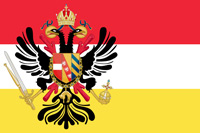 The Austrian Netherlands was the territory of the Burgundian Circle of the Holy Roman Empire between 1714 and 1797. The period began with the Austrian acquisition of the former Spanish Netherlands under the Treaty of Rastatt in 1714 and lasted until Revolutionary France annexed the territory during the aftermath of the Battle of Sprimont in 1794 and the Peace of Basel in 1795. for France's aid in recapturing Silesia. Frustrated by this decision and by the Dutch Republic's
The Austrian Netherlands was the territory of the Burgundian Circle of the Holy Roman Empire between 1714 and 1797. The period began with the Austrian acquisition of the former Spanish Netherlands under the Treaty of Rastatt in 1714 and lasted until Revolutionary France annexed the territory during the aftermath of the Battle of Sprimont in 1794 and the Peace of Basel in 1795. for France's aid in recapturing Silesia. Frustrated by this decision and by the Dutch Republic's The Dutch Republic was a confederation that existed from 1579, during the Dutch Revolt, to 1795. It was a predecessor state of the Netherlands and the first fully independent Dutch nation state. Although the state was small and contained only around 1.5 million inhabitants, it controlled a worldwide network of seafaring trade routes. The income from this trade allowed the Dutch Republic to compete militarily against much larger countries. It amassed a huge fleet of 2,000 ships, initially larger than the fleets of England and France combined. insistence on neutrality, Britain soon turned to Russia. On 30 September 1755, Britain pledged financial aid to Russia in order to station 50,000 troops on the Livonian-Lithuanian border, so they could defend Britain's interests in Hanover immediately. Besthuzev, assuming the preparation was directed against Prussia, was more than happy to obey the request of the British. Unbeknownst to the other powers, King George II also made overtures to the Prussian king, Frederick, who, fearing the Austro-Russian intentions, was also desirous of a rapprochement with Britain. On 16 January 1756, the Convention of Westminster was signed, whereby Britain and Prussia promised to aid one another; the parties hoped to achieve lasting peace and stability in Europe.
The Dutch Republic was a confederation that existed from 1579, during the Dutch Revolt, to 1795. It was a predecessor state of the Netherlands and the first fully independent Dutch nation state. Although the state was small and contained only around 1.5 million inhabitants, it controlled a worldwide network of seafaring trade routes. The income from this trade allowed the Dutch Republic to compete militarily against much larger countries. It amassed a huge fleet of 2,000 ships, initially larger than the fleets of England and France combined. insistence on neutrality, Britain soon turned to Russia. On 30 September 1755, Britain pledged financial aid to Russia in order to station 50,000 troops on the Livonian-Lithuanian border, so they could defend Britain's interests in Hanover immediately. Besthuzev, assuming the preparation was directed against Prussia, was more than happy to obey the request of the British. Unbeknownst to the other powers, King George II also made overtures to the Prussian king, Frederick, who, fearing the Austro-Russian intentions, was also desirous of a rapprochement with Britain. On 16 January 1756, the Convention of Westminster was signed, whereby Britain and Prussia promised to aid one another; the parties hoped to achieve lasting peace and stability in Europe.
The carefully coded word in the agreement proved no less catalytic for the other European powers. The results were absolute chaos. Empress Elizabeth of Russia was outraged at the duplicity of Britain's position. Not only that, but France was enraged, and terrified, by the sudden betrayal of its only ally. Austria, particularly Kaunitz, used this situation to their utmost advantage. Now-isolated France was forced to accede to the Austro-Russian alliance or face ruin. Thereafter, on 1 May 1756, the First Treaty of Versailles was signed, in which both nations pledged 24,000 troops to defend each other in the case of an attack. This diplomatic revolution proved to be an important cause of the war; although both treaties were self-defensive in nature, the actions of both coalitions made the war virtually inevitable.
In North America
The boundary between British and French possessions in North America was largely undefined in the 1750s. France had long claimed the entire Mississippi River basin. This was disputed by Britain. In the early 1750s the French began constructing a chain of forts in the Ohio River Valley to assert their claim and shield the Native American population from increasing British influence.
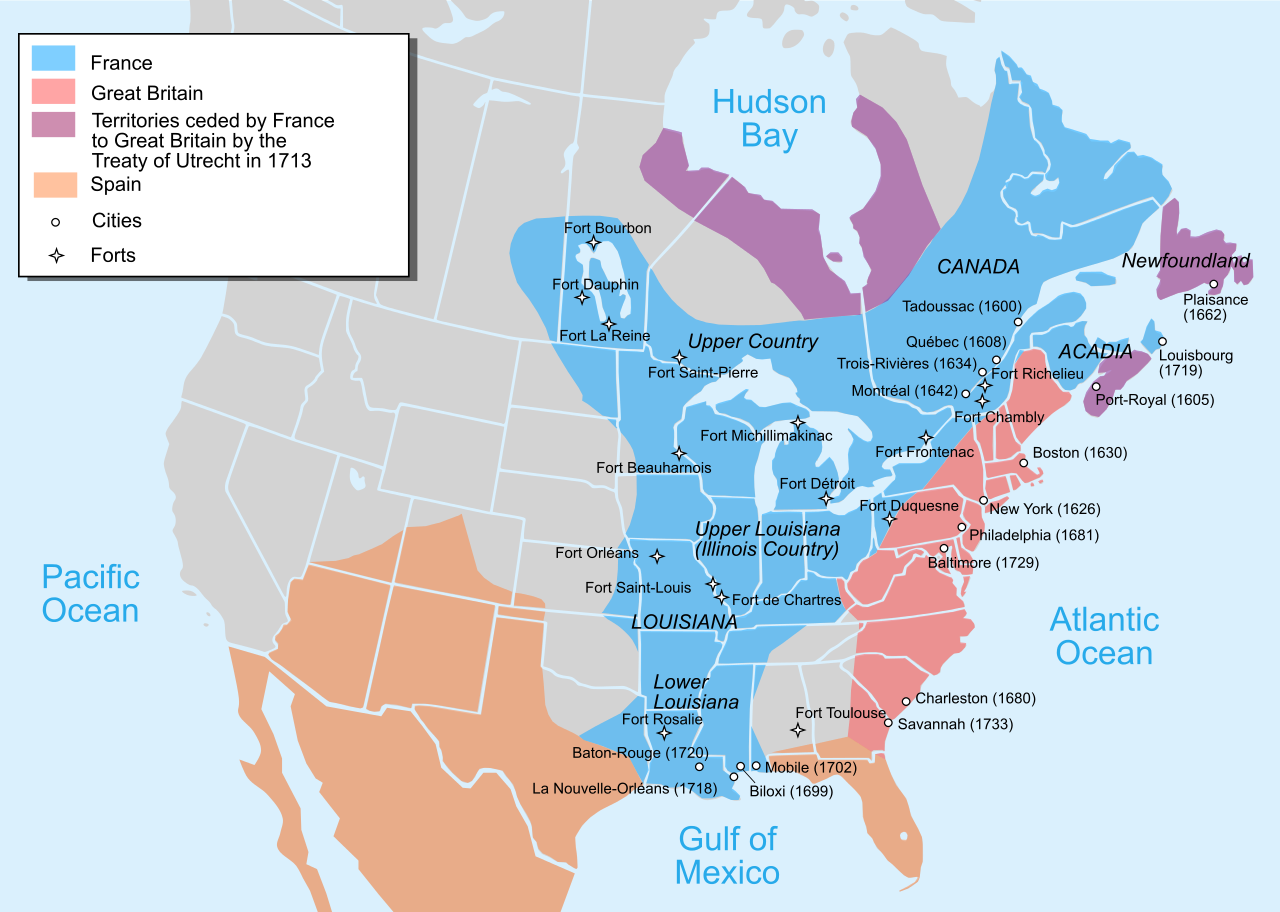
Map of the British and French settlements in North America in 1750, before the French and Indian War (1754 to 1763), that was part of the Seven Years' War

Map of the British and French settlements in North America in 1750, before the French and Indian War (1754 to 1763), that was part of the Seven Years' War
( Click image to enlarge)
The British settlers along the coast were upset that French troops would now be close to the western borders of their colonies. They felt the French would encourage their tribal allies among the North American natives to attack them. Also, the British settlers wanted access to the fertile land of the Ohio River Valley for the new settlers that were flooding into the British colonies seeking farm land.
The most important French fort planned was intended to occupy a position at "the Forks" where the Allegheny and Monongahela Rivers meet to form the Ohio River (present day Pittsburgh, Pennsylvania). Peaceful British attempts to halt this fort construction were unsuccessful, and the French proceeded to build the fort they named Fort Duquesne. British colonial militia from Virginia were then sent to drive them out. Led by George Washington, they ambushed a small French force at Jumonville Glen on 28 May 1754 killing ten, including commander Jumonville. The French retaliated by attacking Washington's army at Fort Necessity on 3 July 1754 and forced Washington to surrender. These were the first engagements of what would become the world wide Seven Years War.
News of this arrived in Europe, where Britain and France unsuccessfully attempted to negotiate a solution. The two nations eventually dispatched regular troops to North America to enforce their claims. The first British action was the assault on Acadia on 16 June 1755 in the Battle of Fort Beauséjour, which was immediately followed by their expulsion of the Acadians. In July British Major General Edward Braddock led about 2,000 army troops and provincial militia on an expedition to retake Fort Duquesne, but the expedition ended in disastrous defeat. In further action, Admiral Edward Boscawen fired on the French ship Alcide on 8 June 1755, capturing it and two troop ships. In September 1755, French and British troops met in the inconclusive Battle of Lake George.
The British also harassed French shipping beginning in August 1755, seizing hundreds of ships and capturing thousands of merchant seamen while the two nations were nominally at peace. Incensed, France prepared to attack Hanover, whose prince-elector was also the King of Great Britain and Minorca. Britain concluded a treaty whereby Prussia agreed to protect Hanover. In response France concluded an alliance with its long-time enemy Austria, an event known as the Diplomatic Revolution.
HISTORY
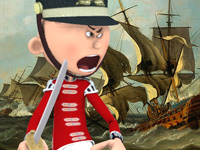
RESOURCES
This article uses material from the Wikipedia article "Seven Years' War", which is released under the Creative Commons Attribution-Share-Alike License 3.0.
© Stories Preschool. All Rights Reserved.
